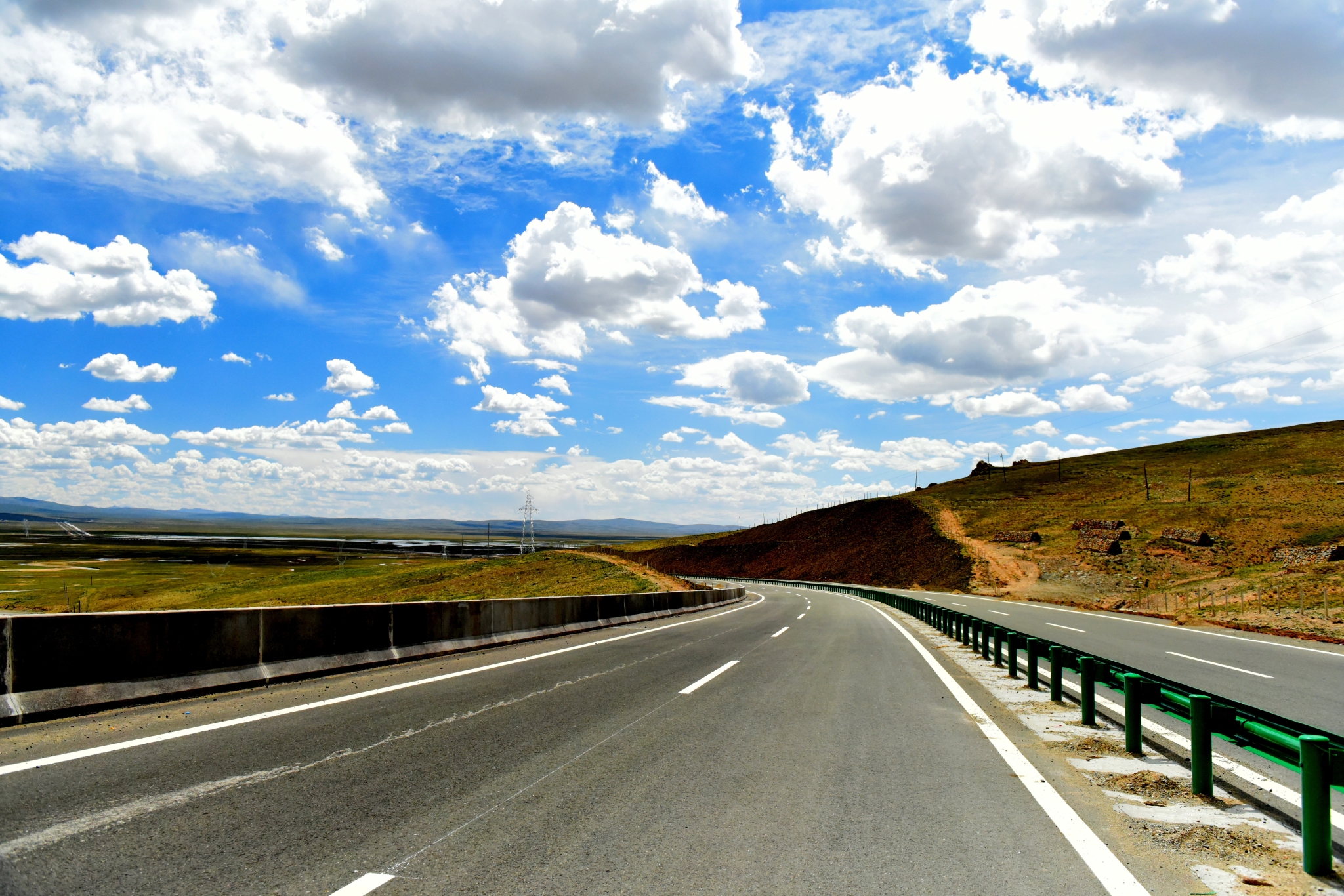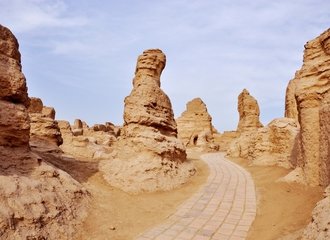Yushu Tibetan Autonomous Prefecture
With reference to Yushu Tibetan Autonomous Prefecture in Qinghai Province, we may first think that it is the source of three major rivers: the Yellow River, the Yangtze River, and the Lancang River. Actually, besides its stunning natural landscape, it is also famous for its unique Tibetan culture, folk customs, historical sites, etc. It has many beautiful reputations such as "the Birthplace of Famous Mountains', "Yak land", "the Hometown Of dancing and singing", and "Chinese Water Tower '' make this prefecture stand out.


Brief Introduction
Yushu Prefecture is located in the southwest of Qinghai Tibetan Plateau, covering an area of 267,000 sq. km (103,089 sq. mi.). As most people living here are Tibetans, it is established as the first ethnic prefecture in Qinghai province and the second in China. The prefecture's capital is Gyegu, which is the place of the old Tibetan trade mart of Jyekundo. The official source of the Yellow River lies within the prefecture. Historically and culturally, it belongs to the cultural realm of Kham in Eastern Tibet.
By the end of 2018, the population is 416,600, which is made up of many ethnic groups, including Tibetan, Han, Hui, Tu, Mongolian, Salar, Miao, Buyi, Zhuang, Manchu, Korean, etc. Tibetan makes up the major group, taking a percentage of over 98%, while all the rest only take a percentage of about 1.7%. It is regarded as an autonomous prefecture with the most ethnic groups in China. Tibetan Buddhism has existed on this land for more than 800 years when Yushu is the one part of the "Silk Road", and most people living here are Tibetan Buddhists.
Yushu draws thousands of tourists every year by its unique plateau natural landscapes and folk customs. To see the appealing Yushu singing and dancing, Tibetan costumes, peculiar folk customs, the grand Yushu Horse Racing Festival, historical and religious relics Temple of Princess Wencheng, Gyanak (Jiana) Mani Stone Field and Jyekundo Dondrubling Monastery. Not even to say Buddhism, it has 192 Tibetan Buddhist temples, nearly thirty percent of the total in Qinghai. Yushu is a mysterious and beautiful land and tourism paradise. Although a horrible earthquake hit this land on April 14th, 2010, most hit areas have already been rebuilt to its original beauty. For a trip to Qinghai, this land should not be missed on your travel plan.


Geography
Yushu Tibetan Autonomous Prefecture, the headwaters of the three great rivers: the Yellow River, the Yangtze River, and the Lancang River, occupies most of the southwestern third of Qinghai, with the exception of the province's extreme southwestern corner (Tanggulashan Town). It borders the Kunlun Mountains and Bayan Har Mountains in the north, Tanggula Mountains in the south, western Sihchuan’s mountains and valleys in the east and northern Tibetan Plateau in the west. The glacial landform is extremely developed here occupying over 70% of the total area, making this area highly rural and sparsely populated. The average elevation is above 4,200 meters (13,780 ft), the highest peak is Bukadaban Feng (6,860m/22,507 ft) and the lowest point is the water surface of Jinsha River (3,335m/10,942 ft), while most of the other areas lie between 4,000-5,000 meters (13,123-16,404 ft).
Grazing is the major business with abundant natural reserves. Besides, water resources take up 89% of this prefecture, while there are many original forests and mountains, which cover an area of 390,000 hectares (963,711 ac.). Moreover, Yushu is rich in wild animals and birds such as wild yak, Tibetan antelope, Tibetan snowcock, Thorold's deer, Snow leopard, and so on, ranking first in China.

Climate and Best Travel Season
Situated at the average elevation of above 4,200m (13,780 ft.), it enjoys a cold, continental high altitude climate. It is also a place with sufficient sunlight, strong solar radiation, many sunshine days, and abundant light energy. There are only two seasons in the prefecture: the cold season and the warm season. Generally, it is very cold all year round, with an average temperature of - 0.8 ℃. The best traveling time is July and August when the weather is the most delightful. However, a trip to Yushu in June, September, and October can be nice too as the scenery is beautiful and the weather is adorable during those months.


Top Attractions
Yushu is famous as a beautiful natural grassland and what makes it more attractive is the glorious and unique singing and dancing of ethnic groups. Every July and August, This land is featured by the flourishing grass and the glorious artistic festival which attracts many tourists from home and abroad. Top attractions include:
- Yushu Horse Racing Festival: It is a traditional festival and the largest event annually held during the week of July 25 - August 1 at Jiegu Grassland of Yushu, dating back to the Turbo period. The festival’s 3 wonders include the thousands of colorful tents, beautiful ethnic traditional Kangba Tibetan costumes, and famous Tibetan dancing and singing.
- Gyegu Ancient Town: It is where the government of Yushu lies. Because of its long history, it is famous for its cultural heritage. Moreover, there are more than 900 mountains with an altitude of 5,000 m. (16,404 ft.) above sea level and many lakes and rivers all over the land. Every year there are horse racing games, which will surely add fun to your tour.
- Princess Wencheng Temple: It is an ancient temple built 1300 years ago in memory of Princess Wencheng in the Tang Dynasty. It is famous for its architectural style and exquisite carving skill of ancient people.
- Tongtian River: Located between Mt. Dangla and Mt. Kunlun, which is famous for its natural wonder and ingenious scenic spots.
- Hoh Xil (Kekexili) Nature Reserve: Hoh Xil, a paradise for over 230 species of rare wild animals and one of the world’s best-preserved nature reserves. The Hoh Xil in Qinghai was listed among the World Heritage Sites as "the largest and highest plateau in the world" with severe climate and harsh environment. This isolated and magical land is perfect for scientific research, travel, and exploration.
- Sanjiangyuan National Natural Reserve: It is the source of the Chinese 3 major rivers: the Yangtze River, the Yellow River, and the Lancang River, it is also noted as the Chinese Water Tower.
- Gyanak (Jiana) Mani Stone Field: It is a large praying stone pile of the local Tibetan people, which consists of more than two billion praying stones engraved with Buddha pictures and sculptures. It is regarded as the world's largest place for praying and blessing.




Useful Travel Tips
- It is convenient to get here by land or air. You can choose to take a 12-hour bus journey from Xining or a 3 days’ overland tour via the Western Sichuan Kham area from Chengdu or take the flight from Xining.
- Travel to Yushu Tibetan Autonomous Prefecture with an average altitude over 4,200 meters (13,780 ft), it is highly recommended to consult your doctor prior to departure, to check your physical fitness and plan a reasonable itinerary following the gradually ascending rule to avoid high-altitude sickness. You should also bring some altitude sickness medicine and portable oxygen inhalers in advance.
- Bring enough warm clothes since most remote mountain villages have no heaters and electricity supplies. Besides, the UV rays can be strong, it’s highly recommended to bring lip balms, hand lotion, moisturizing cream, sun cream, sun hat, and sunglasses to prevent yourself from sunburn.





















